Wine step by step
Wine is a traditionally made product in which nature demonstrates all its wisdom throughout the entire production process. Three charts follow showing a basic scheme of the stages that are carried out in order to obtain the different types of wine. What you will encounter here are schemes that are missing only slight details, but which, at the same time, are extremely difficult to layout in a chart. These are details such as the oenologists’ passion, care and expertise, who, day after day, pamper the grape that reaches the winery until the fruit leaves it, after turning it into a wine that will be used for celebrating the more special occasions.
- White wine
- Red wine
- Rosé wine
Cold Maceration
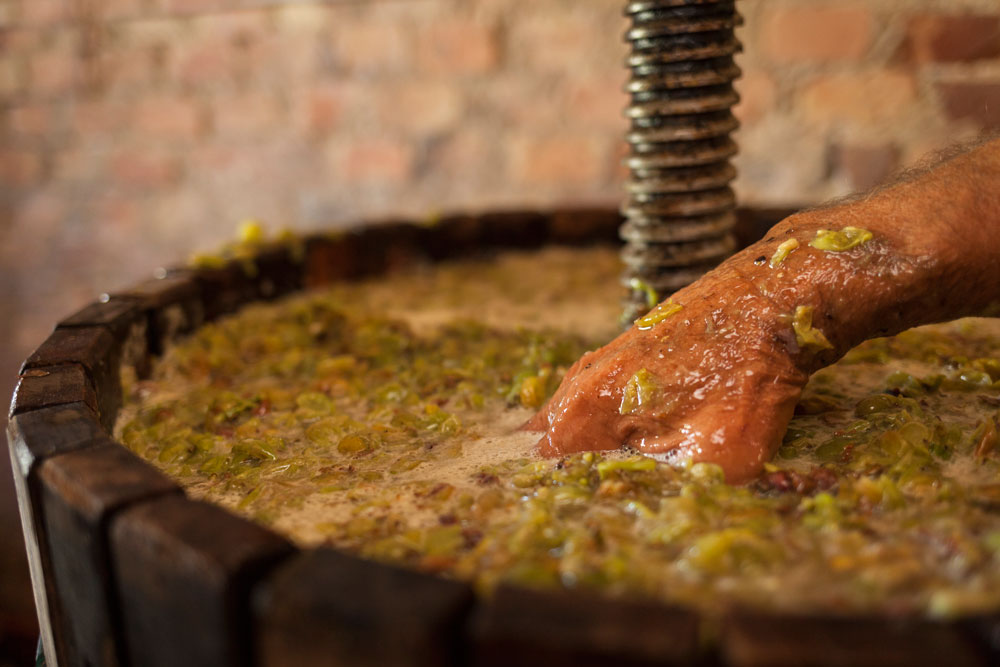
What it is: When the grape reaches the winery, the must is kept in contact with the grape skins; cold is applied so the fermentation process does not start.
What its purpose is: To extract all the grape’s aroma and taste from the skins.
Pressing
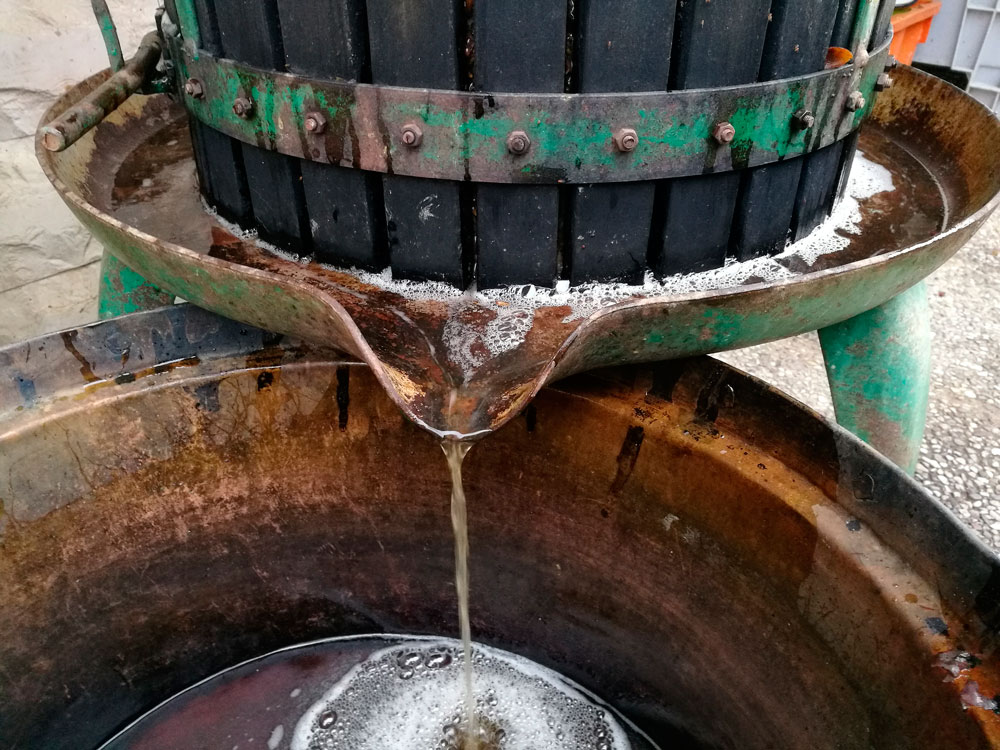
What it is: It consists in introducing the grape in the press, which is a machine that presses the grape.
What its purpose is: To extract the grape’s must.
Clearing
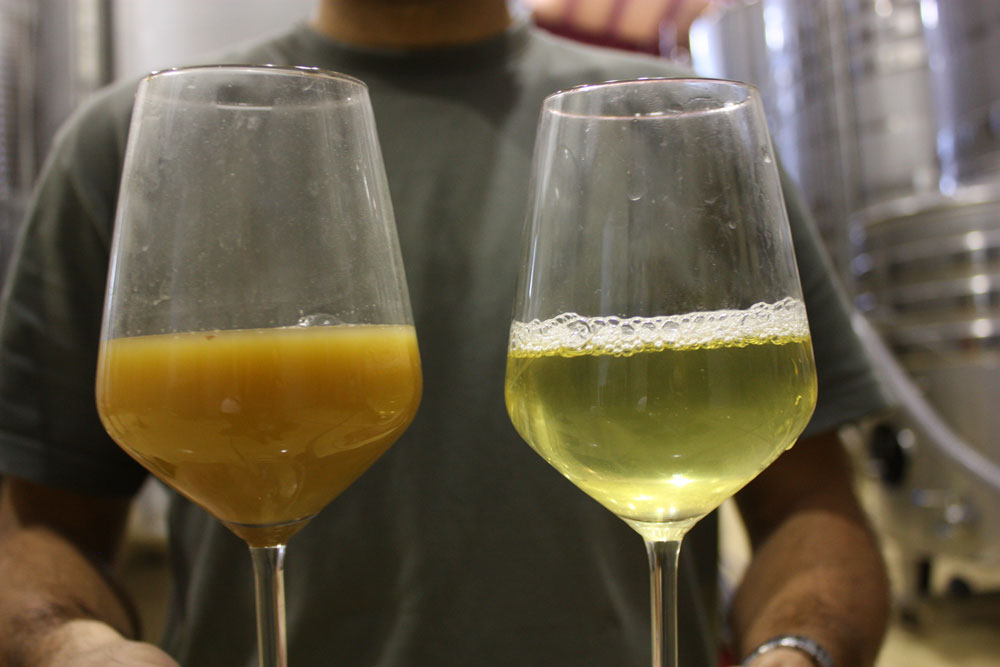
What it is: The elimination of existing solid matter in suspension within the must after pressing, when producing white and rosé wines.
What its purpose is: To obtain a clean must, so in fermentation it provides cleaner aromas.
Fermentation
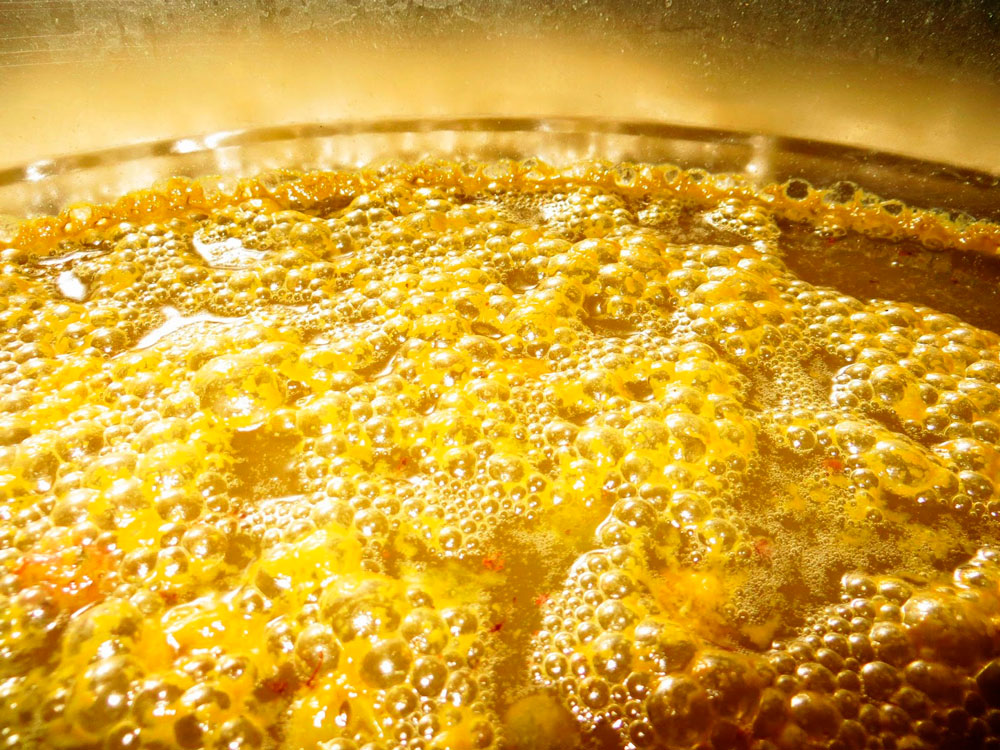
What it is: It is the process in which the must’s sugar becomes ethyl alcohol by means of the action carried out by the natural yeasts that are present in the skins of grapes (in the bloom) and in the winery itself. It is one of the essential moments in the process of wine-making.
What its purpose is: It is an essential process for the wine to become an alcoholic beverage, albeit, it is not the only way for producing alcohol, as wines produced by means of carbonic maceration (without de-stemming and including the entire grape), also produce alcohol within the berry through an enzymatic process.
Racking
What it is: It consists in separating the wine from the lees that accumulate on the bottom of vats or barrels. Lees are the remains of yeasts and other solid substances that accumulate on the bottom of the wine containers.
What its purpose is: It is how the wine is separated from the substances that make it cloudy, and therefore it is the way wine is cleaned naturally.
Clarification
What it is: It consists in adding to the wine a fining agent that by means of electrostatic charge joins the particles in suspension with opposite charge, forming larger floccules that precipitate due to gravity.
What its purpose is: Its purpose is to eliminate sediments or particles in suspension. For example, egg white has an opposite charge to the tannins, therefore these two substances join and precipitate; it is added to red wines in order to eliminate the excess of tannins in suspension. Bentonites have an opposite charge to proteins and it is used mainly in whites and rosés to eliminate the excess of proteins.
Cold Stabilization
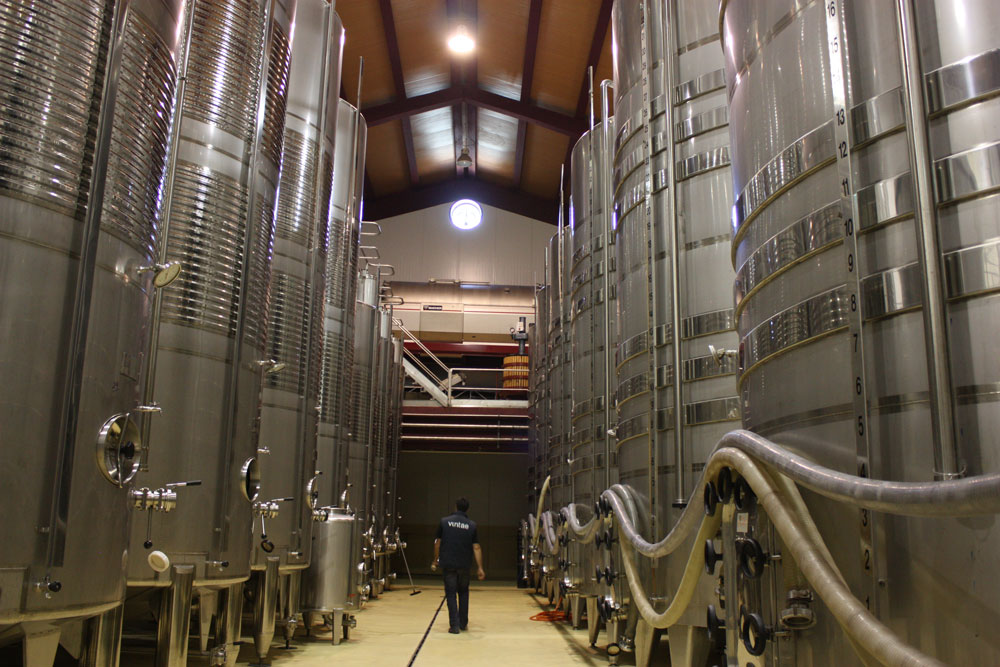
What it is: Cold stabilization is the process in which wine is subject to cooling so the tartrates, which are not soluble at lower temperatures, precipitate in the vat. Tartaric acid, which is the grape’s main acid, forms salts with the Potassium and Sodium becoming tartrates.
What its purpose is: So precipitations are not found in the bottle when cooling the wine before serving.
Filtration
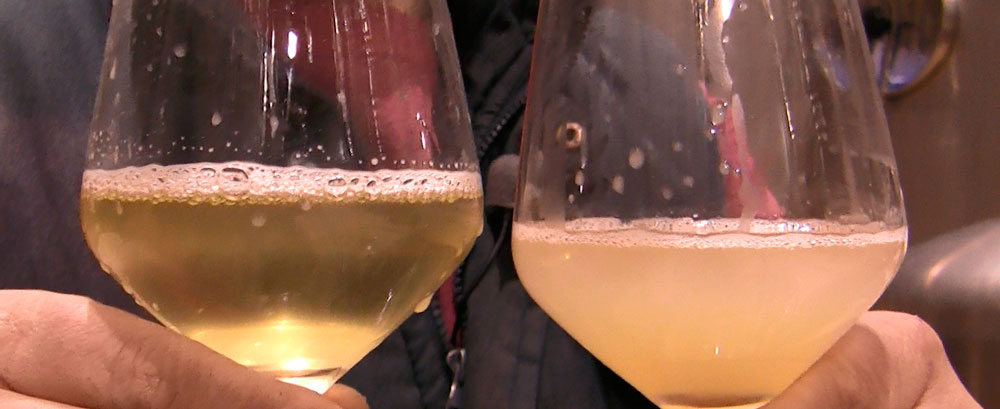
What it is: Another process used for eliminating wine sediments.
What its purpose is: Leaving the wine perfectly clean and ready for bottling.
Bottling
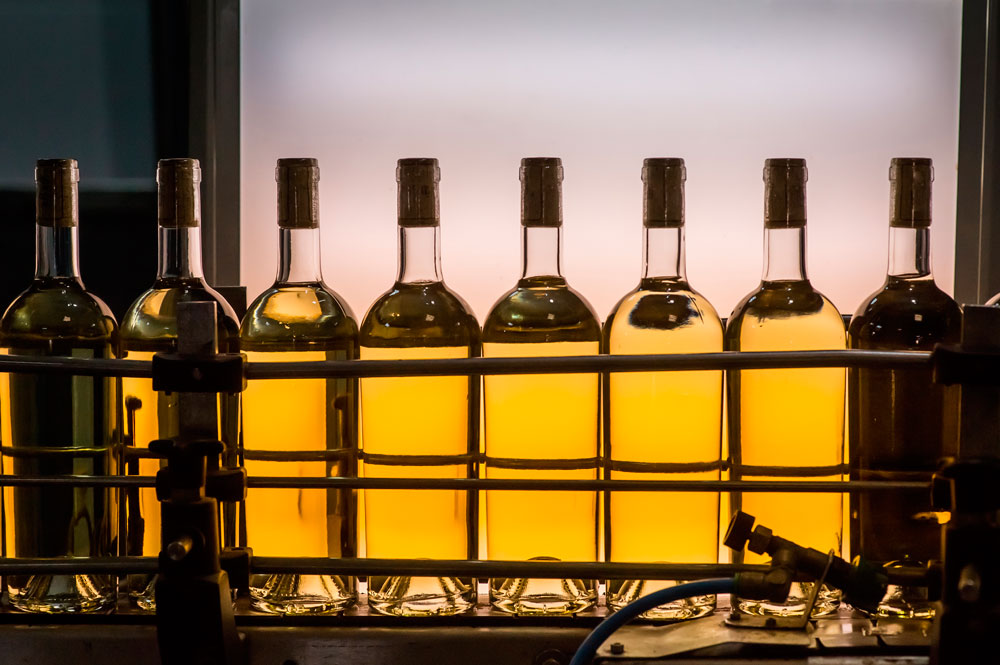
What it is: As its name suggests, it consists in introducing the wine in the bottle.
What its purpose is: It is one way of getting the wine to the consumer, but above all, it is the best, as besides a matter of image, the bottle is the final touch in fine-tuning a wine, rounding it and reaching its optimum moment for consumption.
De-Stemming
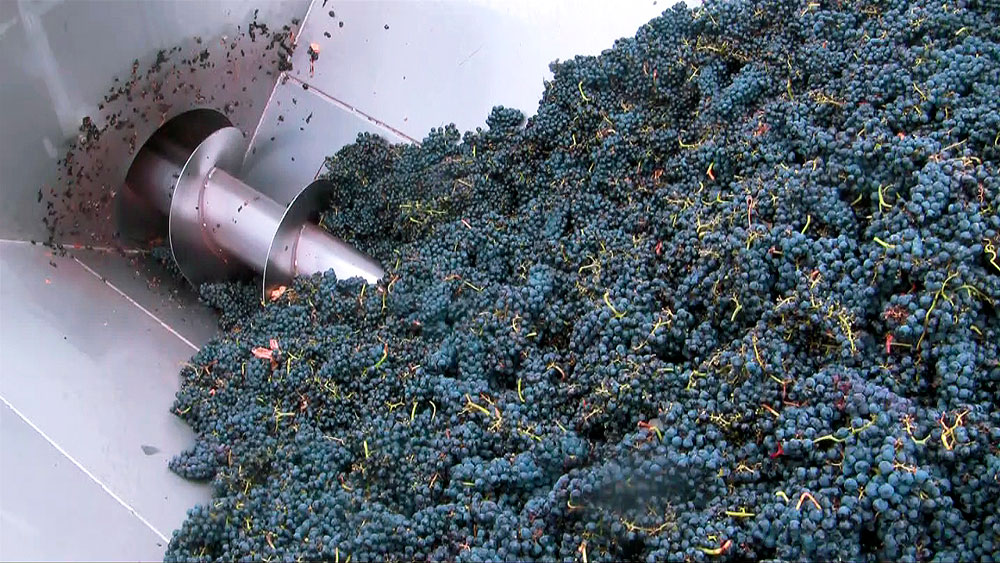
What it is: It consists in separating the grapes from the stem or stalk, which is the herbaceous structure of the cluster.
What its purpose is: The stem has a lot of potassium, which reduces the acidity of wines. Sometimes, the stem may also provide herbaceous tastes to the wine.
Crushing
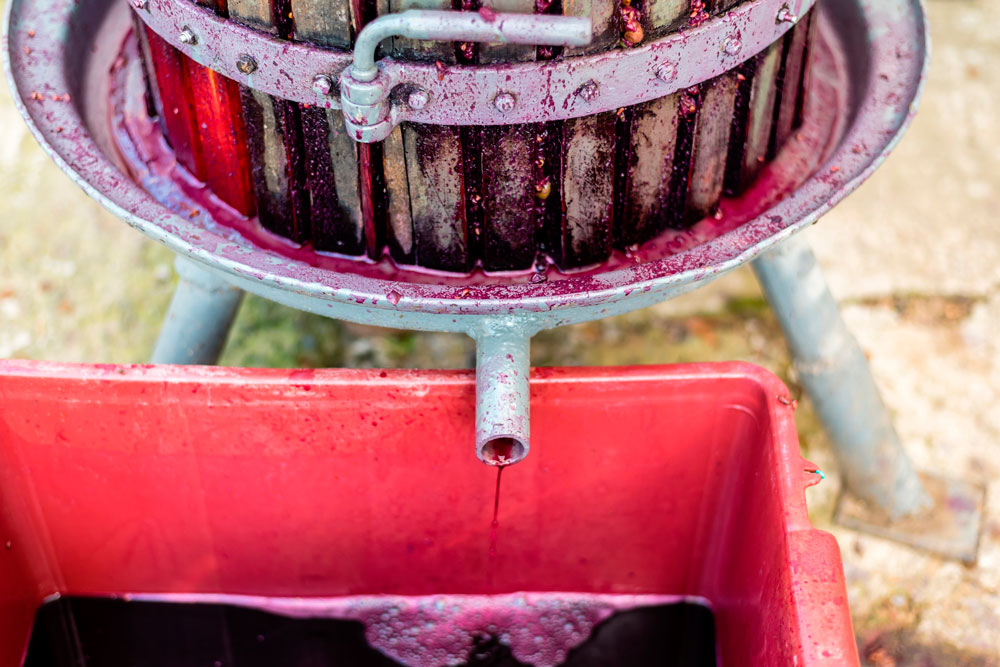
What it is: Once separated from the stem the fruit is crushed to extract the must.
What its purpose is: When crushing the berries, we obtain a larger amount of must. This will result in a more efficient extraction of must in the case of the white grape, which goes directly to the press, and in the case of reds, which macerate in the vat together with the skins (of the grapes), it allows for greater maceration, as the must is in contact with the skins.
Fermentation
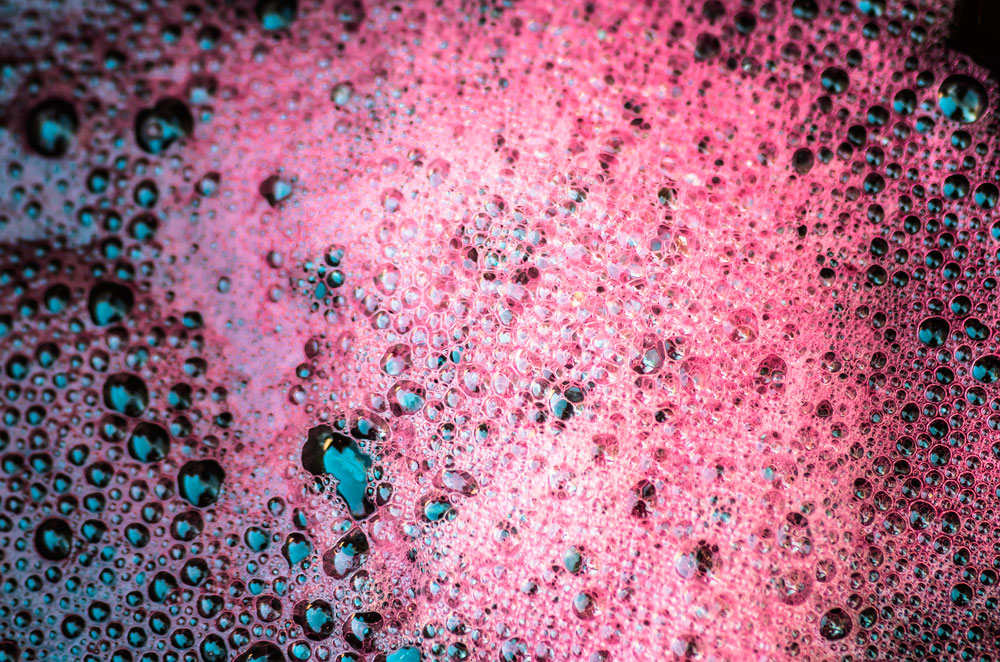
What it is: It is the process in which the must’s sugar becomes ethyl alcohol through the action carried out by the natural yeasts that are present in the grape skins (in the bloom) and in the winery itself. It is one of the essential moments in the process of wine-making.
What its purpose is: It is an essential process for the wine to become an alcoholic beverage, albeit, it is not the only way to produce alcohol, as wines produced by means of carbonic maceration (without de-stemming and including the entire grape), also produce alcohol within the berry through an enzymatic process.
Maceration
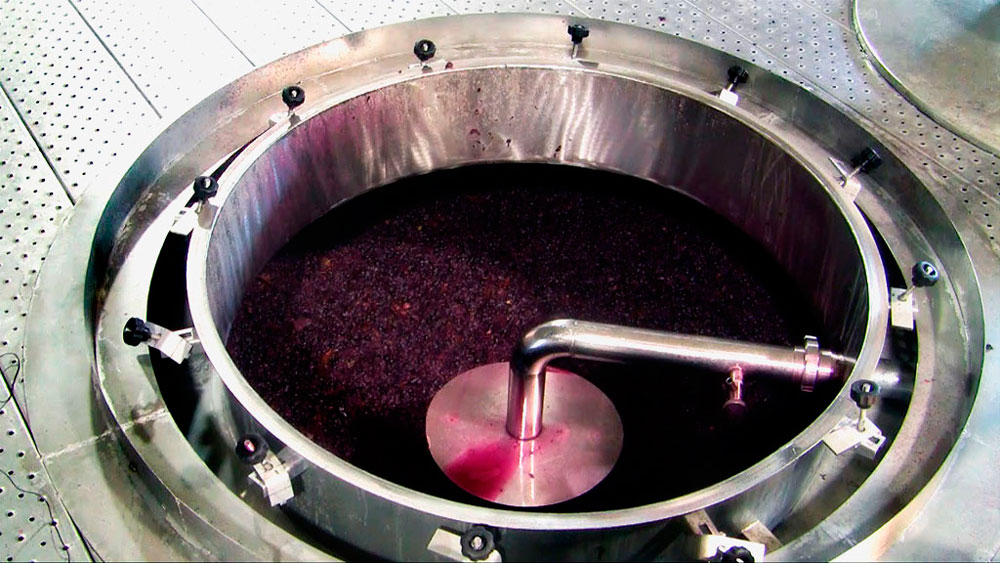
What it is: Maceration is the contact between the liquid and the solid parts of the grape. It is a process that initiates from the moment the must enters in contact with the grape skins.
What its purpose is: In whites, it is shorter, usually only lasting for a few hours, but it is very important in the extraction of aromas. In reds, it is much longer, lasting for several days, and it is essential in the extraction of aromas, tannins and the skin’s colour.
Malolactic Fermentation
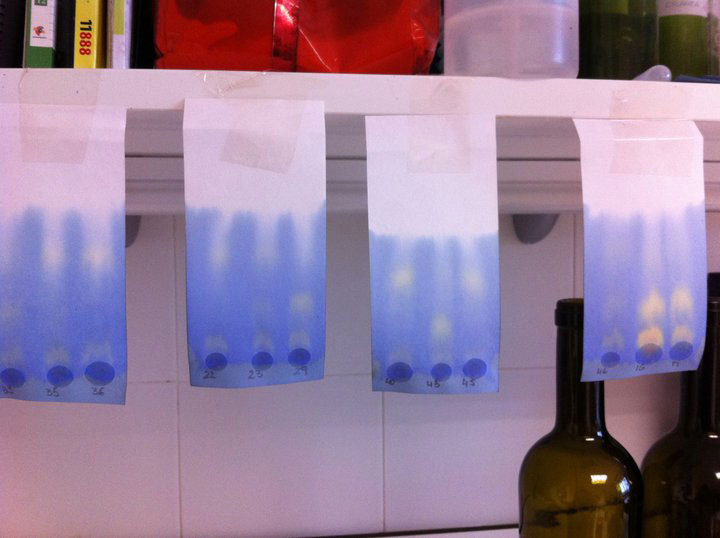
What it is: It is a microbiological process initiating from the lactic bacteria that is naturally present in the grape and in which the malic acid becomes lactic acid.
What its purpose is: Malolactic fermentation is an essential process in red wines and some whites of high latitudes, where acidity is excessive, as it involves a deacidification of the wine due to two reasons. First, because part of the acid becomes carbonic acid and is released; and, second, because the lactic acid is a smoother acid than the malic acid.
Racking
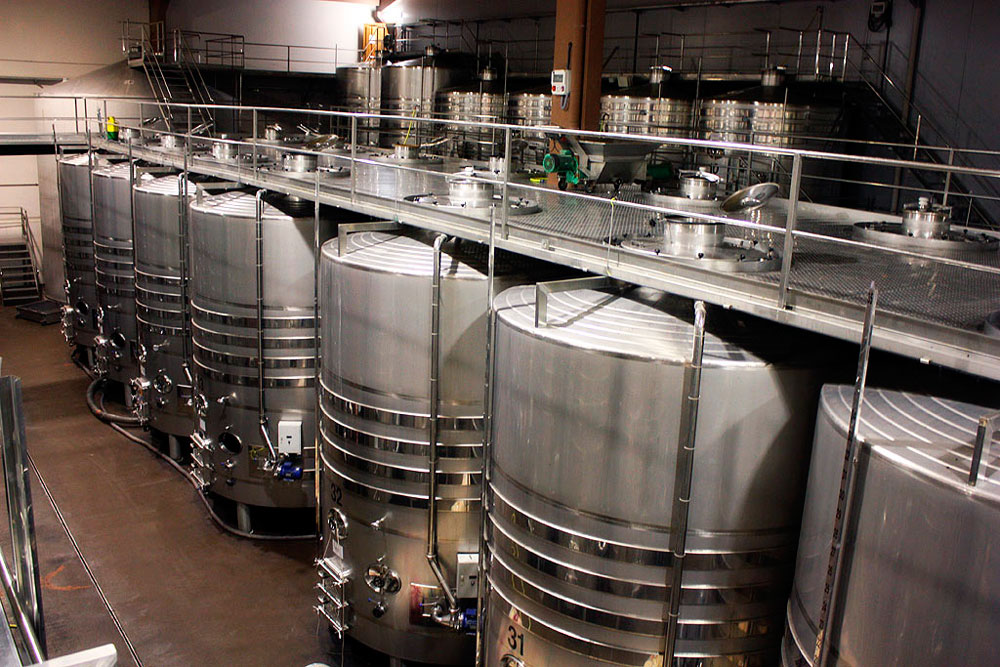
What it is: It consists in separating the wine from the lees that accumulate on the bottom of vats or barrels. Lees are the remains of yeasts and other solid substances that accumulate on the bottom of wine containers.
What its purpose is: It is how the wine is separated from the substances that make it cloudy, and therefore it is the way wine is cleaned naturally.
Clarification
What it is: It consists in adding to the wine a fining agent that by means of electrostatic charge joins the particles in suspension with opposite charge, forming larger floccules that precipitate due to gravity.
What its purpose is: Its purpose is to eliminate sediments or particles in suspension. For example, egg white has an opposite charge to the tannins, therefore these two substances join and precipitate; it is added to red wines in order to eliminate the excess of tannins in suspension.
Filtration
What it is: Another process used for eliminating wine sediments.
What its purpose is: Leaving the wine perfectly clean and ready for bottling.
Classification or Blending
What it is: Mixing wines that have been produced in different vats and may belong to different harvests or pourings.
What its purpose is: Blending the different vats and producing a homogeneous wine.
Aging in Barrel
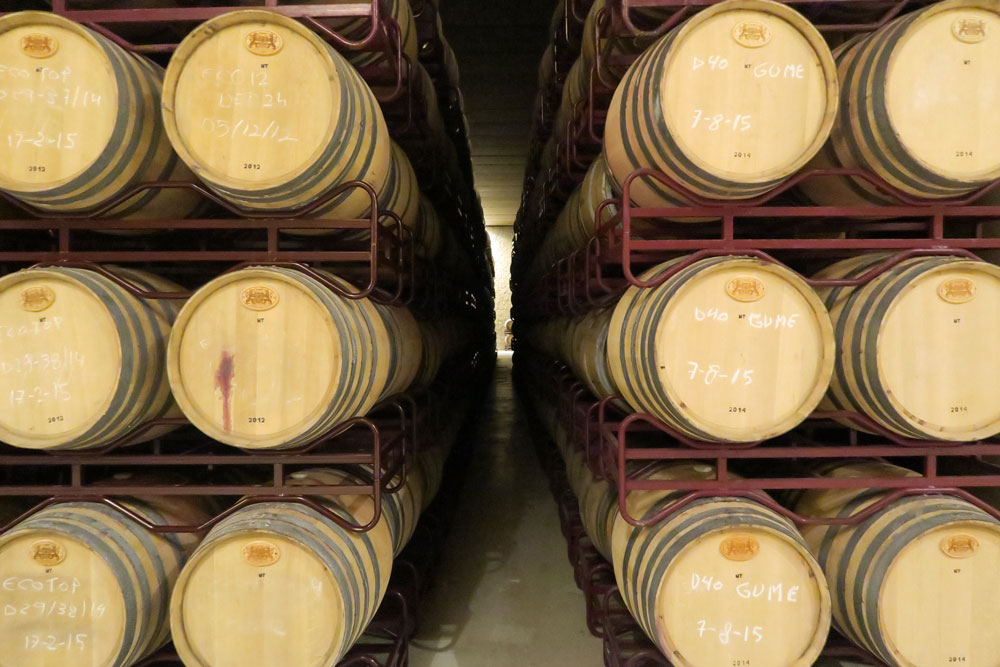
What it is: It is the aging and maturing process of wine carried out in the barrel.
What its purpose is: In the course of aging in barrel, several different processes take place. First, a transferral of aroma and taste substances take place from the wood to the wine. Second, oxygen is introduced to the wine in a controlled manner (Micro-oxygenation) which allows for the stabilization of the wine’s colour. Third, by carrying out several rackings, it provides the wine stability and cleanliness.
Bottling
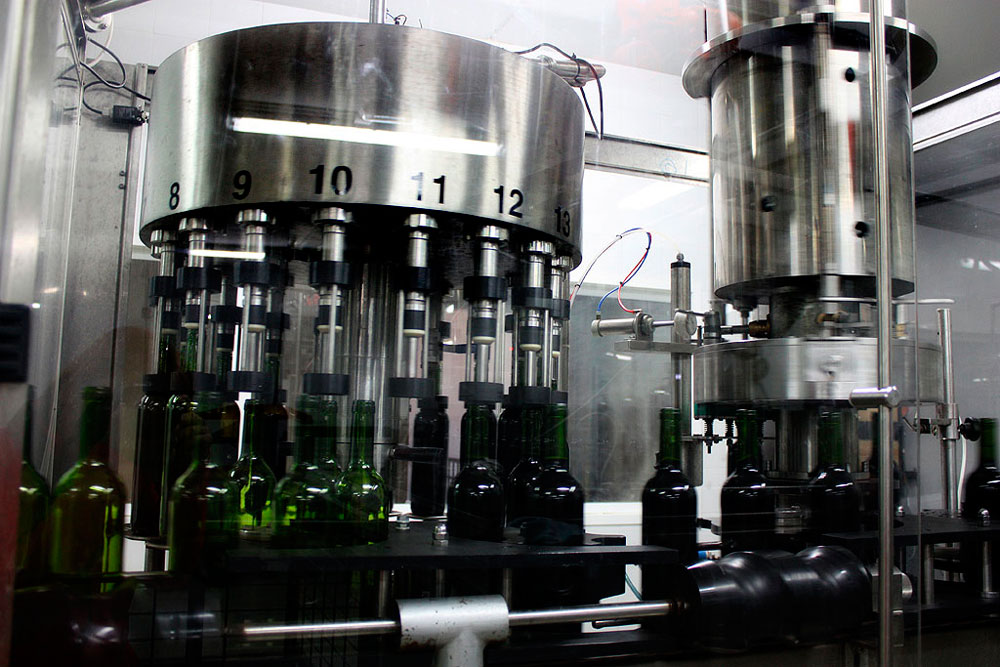
What it is: As its name suggests, it consists in introducing the wine in the bottle.
What its purpose is: It is one way of getting the wine to the consumer, but above all, it is the best, as besides a matter of image, the bottle is the final touch in fine-tuning a wine, rounding it and reaching its optimum moment for consumption.
Aging in Bottle
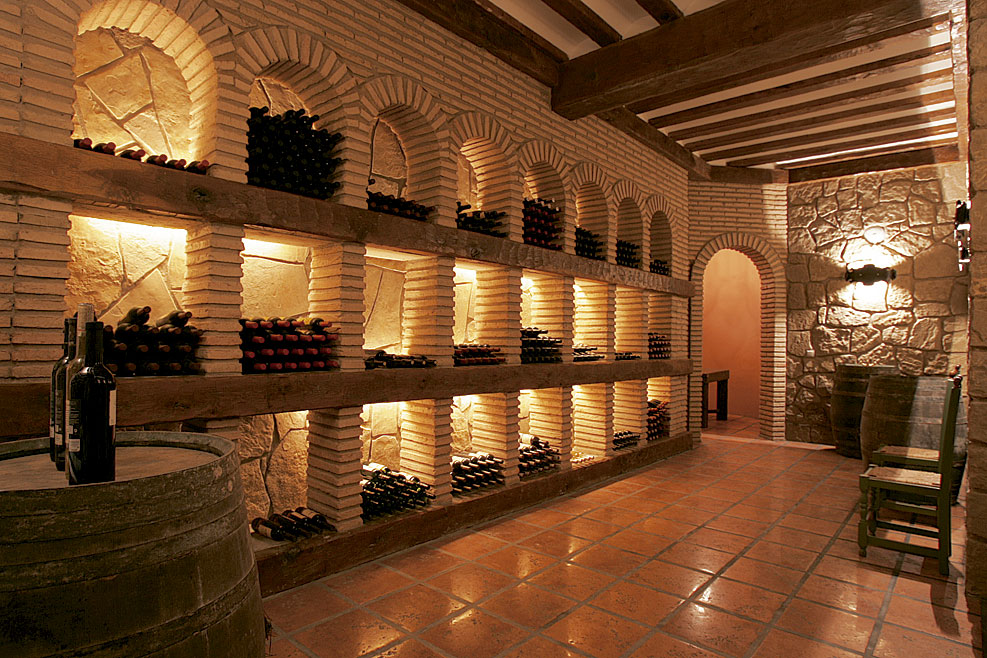
What it is: It consists in keeping the wine within the bottle in the winery’s cellar. It is a reductive aging process opposed to the oxidative aging that is produced in barrel.
What its purpose is: The bottle is the final touch in fine-tuning a wine, as inside the bottle, the wine is rounded and it reaches its optimum moment for consumption.
De-Stemming

What it is: It consists in separating the grapes from the stem or stalk, which is the herbaceous structure of the cluster.
What its purpose is: The stem has a lot of potassium, which reduces the acidity of wines. Sometimes, the stem may also provide herbaceous tastes to the wine.
Crushing

What it is: Once separated from the stem the fruit is crushed to extract the must.
What its purpose is: When crushing the berries, we obtain a larger amount of must. This will result in a more efficient extraction of must in the case of the white grape, which goes directly to the press, and in the case of reds, which macerate in the vat together with the skins (of the grapes), it allows for greater maceration, as the must is in contact with the skins.
Draining
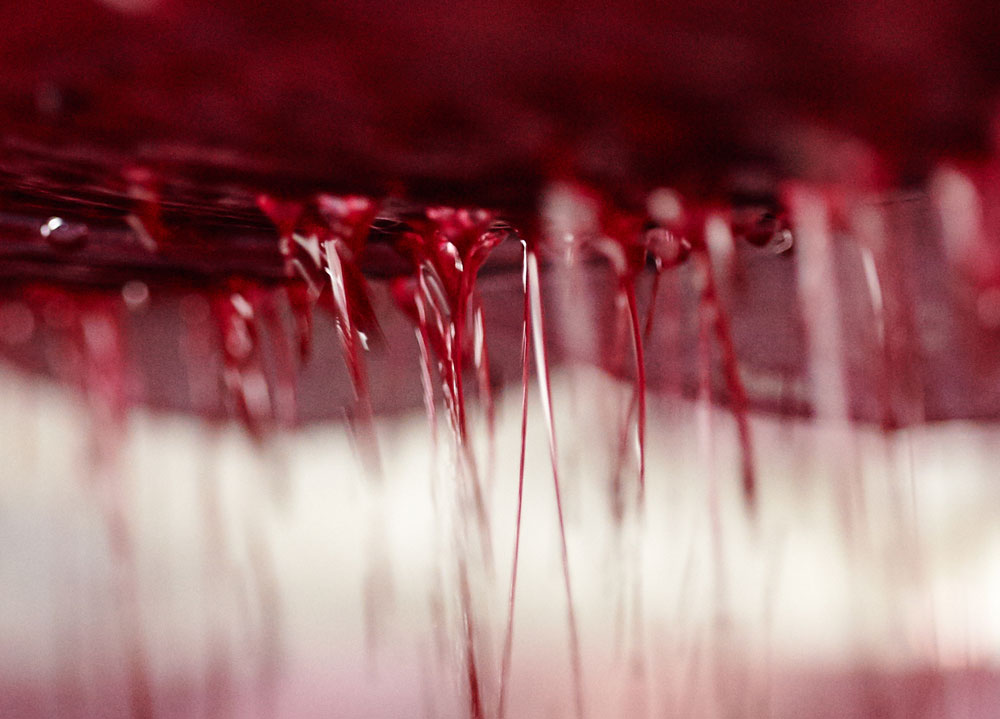
What it is: The action of allowing the must that is released from the harvest to flow.
What its purpose is: To extract the grape’s free-run juice or draining, thus separating the must from its solid parts in a natural way.
Fermentation
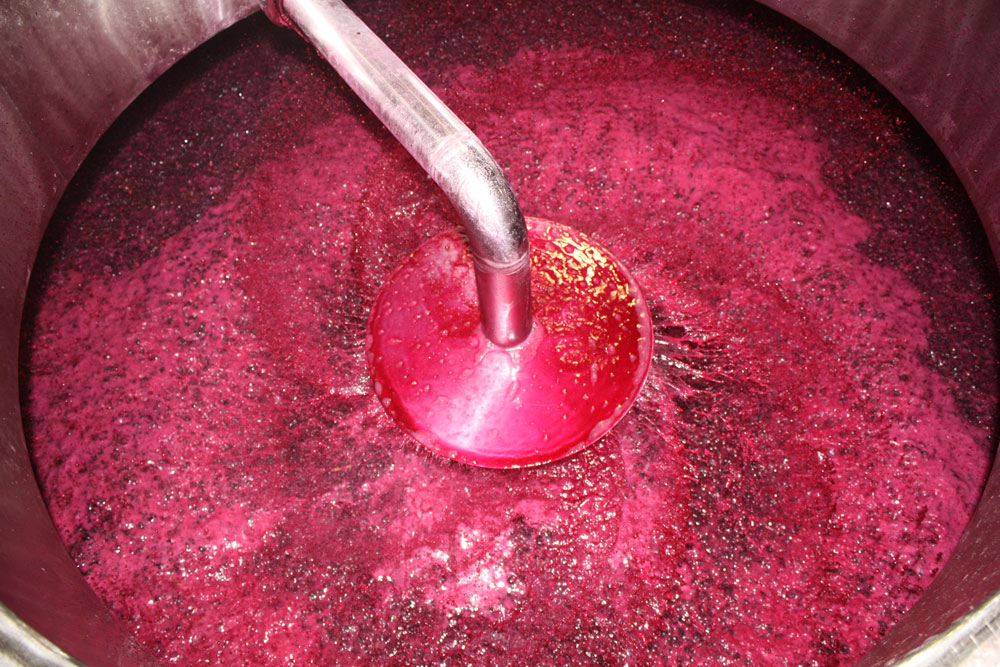
What it is: It is the process in which the must’s sugar becomes ethyl alcohol through the action carried out by the natural yeasts that are present in the grape skins (in the bloom) and in the winery itself. It is one of the essential moments in the process of wine-making.
What its purpose is: It is an essential process for the wine to become an alcoholic beverage, albeit, it is not the only way to produce alcohol, as wines produced by means of carbonic maceration (without de-stemming and including the entire grape), also produce alcohol within the berry through an enzymatic process.
Racking

What it is: It consists in separating the wine from the lees that accumulate on the bottom of vats or barrels. Lees are the remains of yeasts and other solid substances that accumulate on the bottom of wine containers.
What its purpose is: It is how the wine is separated from the substances that make it cloudy, and therefore it is the way wine is cleaned naturally.
Clarification
What it is: It consists in adding to the wine a fining agent that by means of electrostatic charge joins the particles in suspension with opposite charge, forming larger floccules that precipitate due to gravity.
What its purpose is: Its purpose is to eliminate sediments or particles in suspension. For example, egg white has an opposite charge to the tannins, therefore these two substances join and precipitate; it is added to red wines in order to eliminate the excess of tannins in suspension. Bentonites have an opposite charge to proteins and it is used mainly in whites and rosés to eliminate the excess of proteins.
Stabilization
What it is: Cold stabilization is the process in which wine is subject to cooling so the tartrates, which are not soluble at lower temperatures, precipitate in the vat. Tartaric acid, which is the grape’s main, forms salts with the Potassium and Sodium becoming tartrates.
What its purpose is: So precipitations are not found in the bottle when cooling the wine before serving.
Bottling
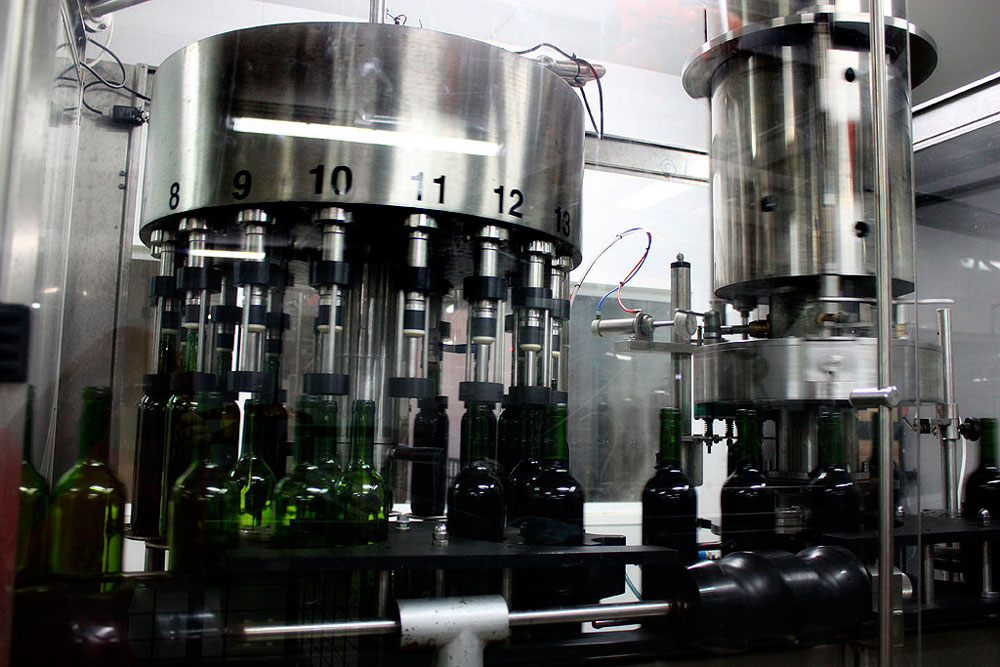
What it is: As its name suggests, it consists in introducing the wine in the bottle.
What its purpose is: It is one way of getting the wine to the consumer, but above all, it is the best, as besides a matter of image, the bottle is the final touch in fine-tuning a wine, rounding it and reaching its optimum moment for consumption.

 Español
Español